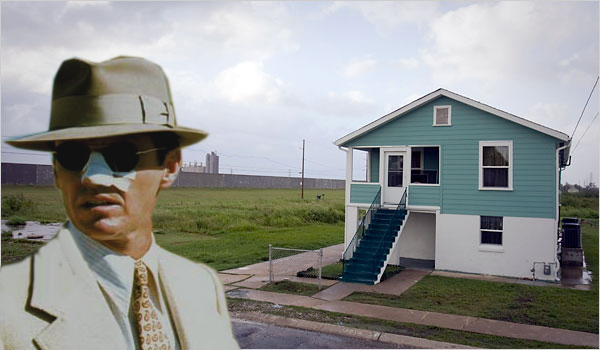
Nicolai Ouroussoff channels my sentiments exactly:
For Americans watching events unfold on television late last month, the arduous evacuation of New Orleans and the grandeur of the Olympic Games couldn’t have made for a starker contrast.
However one feels about its other policies, the Chinese government is clearly not afraid to invest in the future of its cities. The array of architecture it created for the Beijing Olympics was only part of a mosaic of roads, bridges, tunnels, canals, subway lines and other projects that have transformed a medieval city of wood and brick into a modern metropolis overnight.
Meanwhile, three full years after Hurricane Katrina devastated New Orleans, much of the city remains a wasteland. As Hurricane Gustav raced toward the Gulf Coast, it became clear that the city's patchwork levee system could not guarantee the safety of its citizens. The evacuation of tens of thousands of residents was cheered as some sort of victory.
But for those with a sense of urban history, the tragedy of New Orleans is not just about governmental disregard for the welfare of the city's inhabitants. It is about a lost opportunity. All of the great challenges that confront the 21st-century city -- from class, race and environmental issues to the continuing duel between history and modernity -- are crystallized in New Orleans.
Yet the kind of visionary urban plan that could address these issues in a bold and thoughtful way has yet to materialize. Instead, some of the country’s greatest architectural minds are inventing the future in cities like Beijing, Shenzhen and Dubai, where their talents are more appreciated.
The signs pointing to this tragic turn of events were there for anyone who cared to read them. The great urban planning experiments that transformed America in the early 20th century were both triumphs of engineering and dazzling monuments to a free, mobile society. Anyone who has watched the film "Chinatown" knows the story of William Mulholland’s aqueduct, which transformed Los Angeles from a desert wasteland into a sunny paradise of trim lawns and orange groves. Less known is the story of modern New Orleans, which exists because of the system of canals, levees and pumps -- the largest in the world -- that were used to drain acres of marshland.
Our fate=Your fate.
If you've got time, definitely read the whole thing.
No comments:
Post a Comment